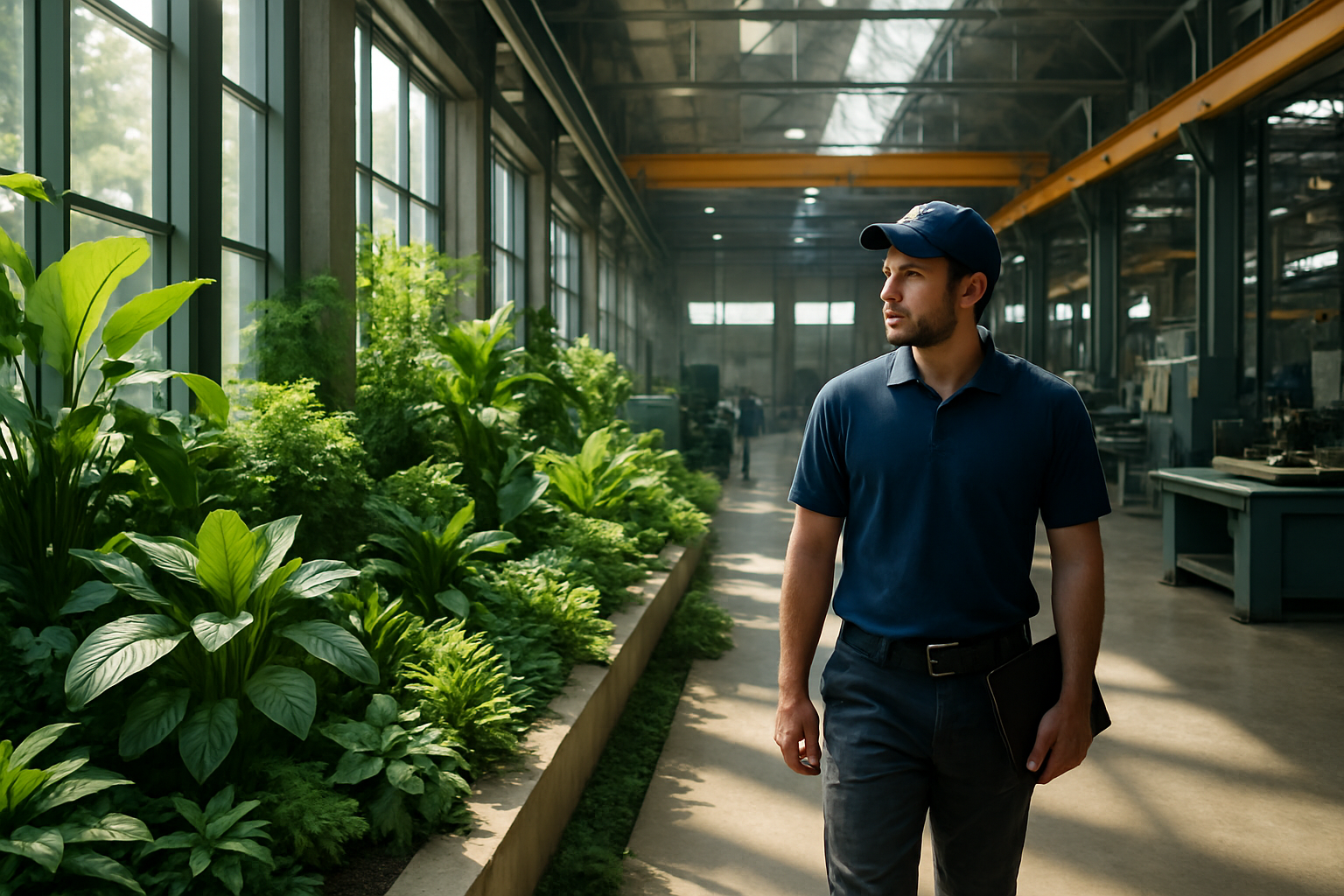Biophilic Design in Industrial Workspaces
Reimagining factory floors and warehouses with nature-inspired elements is transforming the industrial landscape. This innovative approach, known as biophilic design, is not just about aesthetics; it's a strategic move to boost productivity, enhance worker well-being, and drive sustainable business practices in traditionally stark environments.

The Origins and Principles of Biophilic Design
Biophilic design stems from the biophilia hypothesis, first proposed by esteemed biologist Edward O. Wilson in the 1980s. This theory suggests that humans have an innate tendency to seek connections with nature and other forms of life. In the context of industrial design, this translates to creating environments that mimic natural settings or incorporate natural elements, even within the confines of traditionally sterile industrial spaces.
The principles of biophilic design in industrial settings encompass several key aspects. These include maximizing natural light, incorporating vegetation, using natural materials and textures, and creating visual connections to outdoor spaces. The goal is to reduce the stark contrast between the natural world and the built environment, fostering a more organic and human-centric workspace.
Implementing Biophilic Elements in Industrial Spaces
Incorporating biophilic design into industrial settings requires thoughtful planning and innovative solutions. One approach is the installation of skylights or large windows to increase natural light penetration, reducing reliance on artificial lighting and creating a more open atmosphere. Living walls or vertical gardens can be integrated into factory interiors, serving both aesthetic and air-purifying functions.
The use of natural materials like wood, stone, and bamboo in furnishings and structural elements can soften the industrial aesthetic while providing tactile connections to nature. Water features, such as fountains or flowing streams, can be incorporated to add a calming element to the workspace. Even in areas where direct outdoor views are not possible, large-scale nature photography or digital displays of natural scenes can provide a visual connection to the outdoors.
The Impact on Worker Well-being and Productivity
Research has shown that biophilic design elements in industrial workspaces can have a significant positive impact on employee well-being and productivity. A study by the University of Oregon found that 10% of employee absences could be attributed to architectural elements that did not connect with nature. By contrast, workspaces with natural elements reported a 15% increase in well-being and a 6% increase in productivity.
The presence of natural elements has been linked to reduced stress levels, improved cognitive function, and enhanced creativity among workers. In industrial settings, where tasks can be repetitive and environments can be harsh, these benefits are particularly valuable. Improved air quality from living plants, reduced noise levels through natural sound absorption, and the psychological benefits of connecting with nature all contribute to a healthier, more satisfying work environment.
Sustainability and Energy Efficiency Benefits
Biophilic design in industrial spaces aligns closely with sustainability goals and can lead to significant energy efficiency improvements. Natural lighting reduces the need for artificial illumination, cutting electricity costs. Living walls and indoor plants act as natural air purifiers, potentially reducing the load on HVAC systems. The use of natural, sustainable materials in construction and furnishings can also lower the overall environmental impact of industrial facilities.
Moreover, biophilic design can contribute to achieving green building certifications such as LEED (Leadership in Energy and Environmental Design), which can enhance a company’s reputation and potentially lead to tax incentives or other benefits. The long-term cost savings from reduced energy consumption and improved building efficiency can offset the initial investment in biophilic design elements.
Challenges and Considerations in Implementation
While the benefits of biophilic design in industrial spaces are compelling, implementation does come with challenges. The initial cost of retrofitting existing structures or incorporating biophilic elements into new designs can be significant. There’s also the ongoing maintenance of living elements like green walls or indoor gardens to consider.
Safety considerations are paramount in industrial settings, and any biophilic design elements must not interfere with operational processes or create hazards. Careful planning is necessary to ensure that natural elements enhance rather than hinder the functionality of the workspace.
Additionally, the effectiveness of biophilic design can vary depending on the specific industry and type of work being performed. What works well in one industrial setting may not be suitable for another, necessitating a customized approach for each facility.
Practical Strategies for Biophilic Industrial Design
• Conduct a biophilic audit of your current space to identify opportunities for natural integration
• Start small with potted plants or nature-inspired artwork before larger implementations
• Prioritize natural light by removing obstacles to windows or installing skylights
• Use color schemes that reflect natural environments to create a more organic feel
• Incorporate natural textures and materials in flooring, walls, and furnishings
• Consider the acoustic properties of natural elements to reduce industrial noise
• Implement water features where appropriate to add a calming element to the space
• Create outdoor break areas or green spaces for employees to connect with nature
As industries continue to evolve, the integration of biophilic design in industrial workspaces represents a forward-thinking approach to creating more humane, sustainable, and productive environments. By bridging the gap between nature and industry, companies can cultivate spaces that not only enhance operational efficiency but also prioritize the well-being of their workforce. As this trend gains momentum, it’s likely that the industrial landscapes of the future will be greener, more vibrant, and more in tune with the natural world.





